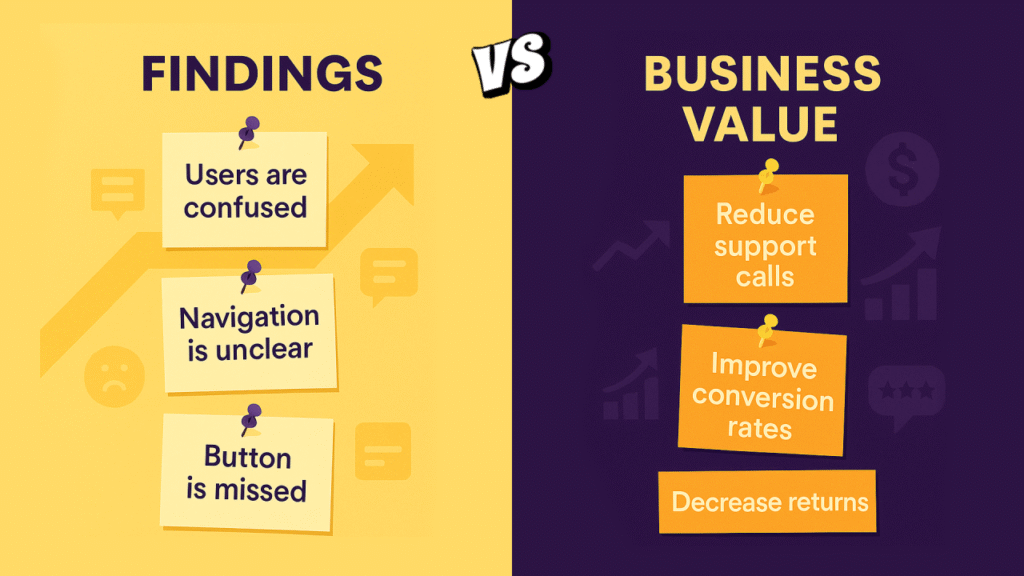
This article is part of my series, “What UX Courses Didn’t Teach Me (But Real Research Did).”
Over the next few days, I’m sharing five essential UX research skills that I didn’t fully learn from certifications or bootcamps—only from real-world projects, messy data, and unexpected conversations with users.
Each day, I’ll break down one skill, the lesson behind it, and what actually makes a difference when you’re practicing UX research in the wild.
Finding patterns in research is satisfying. But spotting a theme isn’t enough—connecting it to business outcomes is what actually drives change.
When I first started synthesizing research, I focused on identifying patterns:
- Which pain points were most common?
- Which features confused users?
- What ideas surfaced repeatedly in interviews?
Affinity mapping felt like progress, but there was minimal response when I shared my findings. Leadership nodded politely but didn’t act on the insights.
I realized the issue: summarizing user struggles wasn’t enough. I needed to show their impact on the business.
Instead of saying: “Users struggled to complete checkout,”
I needed to communicate: “Improving this checkout flow could boost successful orders by 12% and reduce abandoned carts by 18%.”
Rather than stating: “Users didn’t notice badge format labels,”
I should highlight: “Clarifying badge formats could cut customer support calls about incorrect product formats—saving time and money.”
This shift in perspective helped me connect insights to measurable outcomes like retention, revenue, conversions, efficiency, and support costs. Synthesizing findings taught me to spot patterns, but translating them into business value made decision-makers listen.
Good research surfaces pain points. Great research connects them to action.
Tomorrow, we’ll wrap up the series by talking about why writing a report isn’t the real goal—and how storytelling became my most valuable UX research tool.
